Antenatal corticosteroids prior to planned caesarean at term for improving neonatal outcomes
- PMID: 34935127
- PMCID: PMC8692259
- DOI: 10.1002/14651858.CD006614.pub4
Antenatal corticosteroids prior to planned caesarean at term for improving neonatal outcomes
Abstract
Background: Infants born at term by elective caesarean section are more likely to develop respiratory morbidity than infants born vaginally. Prophylactic corticosteroids in singleton preterm pregnancies accelerate lung maturation and reduce the incidence of respiratory complications. It is unclear whether administration at term gestations, prior to caesarean section, improves the respiratory outcomes for these babies without causing any unnecessary morbidity to the mother or the infant.
Objectives: The objective of this review was to assess the effect of prophylactic corticosteroid administration before elective caesarean section at term, as compared to usual care (which could be placebo or no treatment), on fetal, neonatal and maternal morbidity. We also assessed the impact of the treatment on the child in later life.
Search methods: For this update, we searched Cochrane Pregnancy and Childbirth's Trials Register, ClinicalTrials.gov (20 January 2021) and reference lists of retrieved studies.
Selection criteria: We included randomised controlled trials comparing prophylactic antenatal corticosteroid administration (betamethasone or dexamethasone) with placebo or with no treatment, given before elective caesarean section at term (at or after 37 weeks of gestation). Quasi-randomised and cluster-randomised controlled trials were also eligible for inclusion.
Data collection and analysis: We used standard Cochrane Pregnancy and Childbirth methods for data collection and analysis. Two review authors independently assessed trials for inclusion, assessed risk of bias, evaluated trustworthiness (based on predefined criteria developed by Cochrane Pregnancy and Childbirth), extracted data and checked them for accuracy and assessed the certainty of the evidence using the GRADE approach. Our primary outcomes were respiratory distress syndrome (RDS), transient tachypnoea of the neonate (TTN), admission to neonatal special care for respiratory morbidity and need for mechanical ventilation. We planned to perform subgroup analyses for the primary outcomes according to gestational age at randomisation and type of corticosteroid (betamethasone or dexamethasone). We also planned to perform sensitivity analysis, including only studies at low risk of bias.
Main results: We included one trial in which participants were randomised to receive either betamethasone or usual care. The trial included 942 women and 942 neonates recruited from 10 UK hospitals between 1995 and 2002. This review includes only trials that met predefined criteria for trustworthiness. We removed three trials from the analysis that were included in the previous version of this review. The risk of bias was low for random sequence generation, allocation concealment and incomplete outcome data. The risk of bias for selective outcome reporting was unclear because there was no published trial protocol, and therefore it is unclear whether all the planned outcomes were reported in full. Due to a lack of blinding we judged there to be high risk of performance bias and detection bias. We downgraded the certainty of the evidence because of concerns about risk of bias and because of imprecision due to low event rates and wide 95% confidence intervals (CIs), which are consistent with possible benefit and possible harm Compared with usual care, it is uncertain if antenatal corticosteroids reduce the risk of RDS (relative risk (RR) 0.34 95% CI 0.07 to 1.65; 1 study; 942 infants) or TTN (RR 0.52, 95% CI 0.25 to 1.11; 1 study; 938 infants) because the certainty of evidence is low and the 95% CIs are consistent with possible benefit and possible harm. Antenatal corticosteroids probably reduce the risk of admission to neonatal special care for respiratory complications, compared with usual care (RR 0.45, 95% CI 0.22 to 0.90; 1 study; 942 infants; moderate-certainty evidence). The proportion of infants admitted to neonatal special care for respiratory morbidity after treatment with antenatal corticosteroids was 2.3% compared with 5.1% in the usual care group. It is uncertain if antenatal steroids have any effect on the risk of needing mechanical ventilation, compared with usual care (RR 4.07, 95% CI 0.46 to 36.27; 1 study; 942 infants; very low-certainty evidence). The effect of antenatal corticosteroids on the maternal development of postpartum infection/pyrexia in the first 72 hours is unclear due to the very low certainty of the evidence; one study (942 women) reported zero cases. The included studies did not report any data for neonatal hypoglycaemia or maternal mortality/severe mortality.
Authors' conclusions: Evidence from one randomised controlled trial suggests that prophylactic corticosteroids before elective caesarean section at term probably reduces admission to the neonatal intensive care unit for respiratory morbidity. It is uncertain if administration of antenatal corticosteroids reduces the rates of respiratory distress syndrome (RDS) or transient tachypnoea of the neonate (TTN). The overall certainty of the evidence for the primary outcomes was found to be low or very low, apart from the outcome of admission to neonatal special care (all levels) for respiratory morbidity, for which the evidence was of moderate certainty. Therefore, there is currently insufficient data to draw any firm conclusions. More evidence is needed to investigate the effect of prophylactic antenatal corticosteroids on the incidence of recognised respiratory morbidity such as RDS. Any future trials should assess the balance between respiratory benefit and potential immediate adverse effects (e.g. hypoglycaemia) and long-term adverse effects (e.g. academic performance) for the infant. There is very limited information on maternal health outcomes to provide any assurances that corticosteroids do not pose any increased risk of harm to the mother. Further research should consider investigating the effectiveness of antenatal steroids at different gestational ages prior to caesarean section. There are nine potentially eligible studies that are currently ongoing and could be included in future updates of this review.
Trial registration: ClinicalTrials.gov NCT00139256 NCT01772381.
Copyright © 2021 The Cochrane Collaboration. Published by John Wiley & Sons, Ltd.
Conflict of interest statement
Alexandros Sotiriadis: I am Associate Professor of Obstetrics, Gynaecology and Maternal Fetal Medicine at Aristotle University of Thessaloniki, Greece. I am also a private practicing physician at EMVRYO PCC.
George Makrydimas: none known.
Stefania Papatheodorou: none known.
John PA Ioannidis: none known.
Emma McGoldrick: I am an author of another Cochrane Review entitled 'Antenatal corticosteroids for accelerating fetal lung maturation for women at risk of preterm birth' (McGoldrick 2020). I am also an author on an overview relating to antenatal corticosteroids (McGoldrick 2016). The present review is potentially eligible for inclusion in the overview. I will not be involved in any assessment or data extraction and two independent review authors will assess this review.
Roses Parker: none known.
Fiona Stewart: I am an author of the Cochrane Review entitled 'Antenatal corticosteroids for accelerating fetal lung maturation for women at risk of preterm birth' (McGoldrick 2020).
Figures





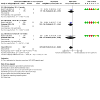
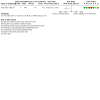
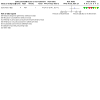

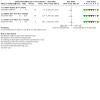
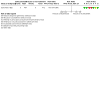
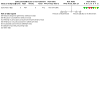


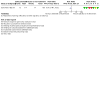


Update of
-
Corticosteroids for preventing neonatal respiratory morbidity after elective caesarean section at term.Cochrane Database Syst Rev. 2018 Aug 3;8(8):CD006614. doi: 10.1002/14651858.CD006614.pub3. Cochrane Database Syst Rev. 2018. Update in: Cochrane Database Syst Rev. 2021 Dec 22;12:CD006614. doi: 10.1002/14651858.CD006614.pub4. PMID: 30075059 Free PMC article. Updated.
References
References to studies included in this review
Stutchfield 2005 {published and unpublished data}
References to studies excluded from this review
Christofori 2011 {published data only}
-
- EUCTR2011-002919-28-IT.Antenatal corticosteroids and respiratory distress syndrome in late preterm infants born by elective cesarean section. Multicentric randomized controlled clinical trial. clinicaltrialsregister.eu/ctr-search/trial/2011-002919-28/IT (first received: 5 December 2011).
Issa 2019 {published data only}
-
- Issa AK, Taha WS, Elsayeh AA, Elhadad HK.Comparative study between betamethasone and dexamethasone as a prophylactic corticosteroids therapy on neonatal outcome in elective cesarean section at 37 weeks. The Egyptian Journal of Hospital Medicine 2019;74(2):420-7.
Jain 2005 {published data only}
-
- NCT00139256.Randomized controlled trial of antepartum betamethasone treatment for prevention of respiratory distress in infants born by elective cesarean section. clinicaltrials.gov/show/NCT00139256 (first received 29 August 2005).
Koch 2016 {published data only}
-
- Koch A, Sananes N, Kuhn P, Escande B, Aissi G, Fritz G, et al.Elective caesarean section at 38 weeks of gestation after corticosteroid versus elective caesarean section at 39 weeks: a randomized controlled trial. European Journal of Obstetrics and Gynecology 2016;206:e160. - PubMed
-
- NCT00446953.Caesarean and corticotherapy. clinicaltrials.gov/show/NCT00446953 (first received: 12 March 2007.
Ontela 2018 {published data only}
-
- Ontela V, Dorairajan G, Bhat VB, Chinnakali P.Effect of antenatal steroids on respiratory morbidity of late preterm newborns: a randomized controlled trial. Journal of Tropical Pediatrics 2018;64(6):531-8. [CENTRAL: CN-01991657] [EMBASE: 626300500] [PMID: ] - PubMed
Sananes 2017 {published data only}
-
- Sananes N, Koch A, Escande B, Aissi G, Fritz G, Roth E, et al.Pilot randomised controlled trial comparing the risk of neonatal respiratory distress in elective caesarean section at 38 weeks' gestation following a course of corticosteroids versus caesarean at 39 weeks. European Journal of Obstetrics, Gynecology, and Reproductive Biology 2017;212:54-9. - PubMed
References to studies awaiting assessment
Afzal 2019 {published data only}
-
- Afzal M, Bilal H, Hayat T.Effect of prophylactic antenatal cortecosteroid and incidence of neonatal respiratory morbidity after elective cesarean section in patients having previous cesarean section. Medical Forum Monthly 2019;30(4):88-91. [CENTRAL: CN-01936415] [EMBASE: 2001966640]
Ahmed 2015 {published data only}
-
- Ahmed MR, Ahmed WAS, Mohammed TY.Antenatal steroids at 37 weeks, does it reduce neonatal respiratory morbidity? A randomized trial. Journal of Maternal-Fetal & Neonatal Medicine 2015;28(12):1486-90. [PMID: ] - PubMed
Ammar 2013 {published data only}
-
- Ammar AR, Rabei NH, Gad HA.Dexamethasone in prevention of respiratory morbidity in elective cesarean section in term fetus. A randomized controlled trial. Journal of American Science 2013;9(6):286-9.
Elbohoty 2020 {published data only}
-
- Elbohoty SB, Dawood AS, Abbas AM, Elgergawy AE.The neonatal outcomes of Dexamethasone administration before scheduled cesarean delivery at term: a randomized clinical trial. International Journal of Reproduction, Contraception, Obstetrics and Gynecology 2020;9(3):1222-7. [CENTRAL: CN-02217949]
Elewa 2020 {published data only}
-
- Elewa A, Saad A, Soliman A, Al Saber A.Does corticosteroids administration after 37 weeks for elective lower segment cesarean section reduce neonatal respiratory morbidity? A randomized controlled trial. Benha Medical Journal 2020;37(3):607-18.
Ismail 2017 {published data only}
-
- Ismail KS, Mahgoub AA, Abdulilah K, Elkheir HA, Kholoud AM, Mohamed O, et al.Effect of prophylactic corticosteroid therapy on respiratory morbidity in infants borne at term by elective cesarean section at Omdurman maternity hospital. Family Medicine and Medical Science Research 2017;6:215. [CENTRAL: CN-02129568]
Kholeif 2010 {published data only}
-
- Kholeif A, Galal H, Hosny T, Hammad B.Betamethasone intramuscularly and neonatal respiratory distress in cases of term elective Cesarean section: alexandria experience. Prenatal Diagnosis 2010;30 Suppl 1:S29. [CENTRAL: CN-02129364] [EMBASE: 70430204]
Kurt 2019 {published data only}
-
- Kurt B, Kose G.Antenatal betamethasone administration before elective caesarean section in term pregnant women [Cumhuriyet Tip Dergisi]. Cumhuriyet Medical Journal 2019;42:747-53.
Nabil 2020 {published data only}
-
- Nabil H, Talkhan HM.Does antenatal dexamethasone before full term planned cesarean section affect the incidence or severity of neonatal jaundice? A randomized controlled trial. Egyptian Journal of Fertility and Sterility 2020;24(2):22-6.
Nada 2016 {published data only (unpublished sought but not used)}
-
- Nada AM, Shafeek MM, El Maraghy MA, Nageeb AH, Salaheldine AS, Awad MH.Antenatal corticosteroid administration before elective caesarean section et term to prevent neonatal respiratory morbidity: a randomized controlled trial. European Journal of Obstetrics, Gynecology, and Reproductive Biology 2016;199:88-91. - PubMed
-
- NCT01772381.Dexamethasone in prevention of respiratory morbidity in elective caesarean. clinicaltrials.gov/show/NCT01772381 (first received 31 December 2012).
Nooh 2018 {published data only}
-
- Nooh AM, Abdeldayem HM, Arafa E, Shazly SA, Elsayed H, Mokhtar WA.Does implementing a regime of dexamethasone before planned cesarean section at term reduce admission with respiratory morbidity to neonatal intensive care unit? A randomized controlled trial. Journal of Maternal-Fetal & Neonatal Medicine 2018;31(5):614-20. - PubMed
Sadiq 2019 {published data only}
-
- Sadiq H, Sohail I.Effects of prophylactic maternal dexamethasone administration on the neonatal respiratory outcomes at term after elective caesarean section: randomized controlled trial. Khyber University Medical Journal 2019;11(1):6-11. [CENTRAL: CN-02118735]
References to ongoing studies
Ahmadpour‐kacho 2015 {published data only}
-
- IRCT2015090923963N1.Effect of antenatal steroid before elective cesarean section(c/s) on prevention of respiratory morbidity of term neonates. en.search.irct.ir/view/25584 (first received 13 November 2015).
Custo 2007 {published data only}
-
- Custo R, Zammit K, Calleja Agius J, Grech H, Brincat M.Use of antenatal dexamethasone in late pregnancy and its effects on incidence of neonatal respiratory distress after elective caesarean sections. In: 31st British International Congress of Obstetrics and Gynaecology; 2007 July 4-6; London, UK. 2007:97.
Dawood 2018 {published data only}
-
- UMIN000029070.Antenatal steroids before full term elective cesarean section: randomized controlled study. www.who.int/trialsearch/Trial2.aspx?TrialID=JPRN-UMIN000029070 2018. [CENTRAL: CN-01899282]
Groom 2020 {published data only}
-
- ACTRN12618002028280.The C*STEROID Feasibility Study: a two-site, randomised placebo controlled trial of corticosteroids before planned caesarean section delivery at 35+0 to 39+6 weeks of pregnancy to determine feasibility for recruitment to the C*STEROID Trial [The C*STEROID Feasibility Study: Corticosteroids before planned caesarean section from 35+0 to 39+6 weeks]. www.who.int/trialsearch/Trial2.aspx?TrialID=ACTRN12618002028280 2018. [CENTRAL: CN-01948945]
-
- ACTRN12620000914965.The C*STEROID Trial: corticosteroids before planned caesarean section from 35+0 to 39+6 weeks of pregnancy [The C*STEROID Trial. Antenatal corticosteroids prior to planned caesarean section delivery from 35+0 to 39+6 weeks gestation; a randomised controlled trial assessing the effects on neonatal respiratory morbidity and glycaemic control]. www.who.int/trialsearch/Trial2.aspx?TrialID=ACTRN12620000914965 2020. [CENTRAL: CN-02184429]
-
- Groom K.Trial protocol: the C*STEROID Trial: corticosteroids before planned caesarean section from 35+0 to 39+6 weeks of pregnancy. cdn.auckland.ac.nz/assets/liggins/docs/CSTEROID_Protocol_V2_9Sept2020.pdf 2020.
Haroun 2018 {published data only}
-
- NCT03396107.Antenatal corticosteroid in elective cesarean section [Role of antenatal corticosteroid use in elective term cesarean section]. clinicaltrials.gov/show/nct03396107 5 January 2018. [CENTRAL: CN-01578593]
Hubesih 2020 {published data only}
-
- NCT04407975.Effect of single dose antenatal betamethasone on neonatal respiratory morbidity after elective cesarean [Effect of single dose antenatal betamethasone on the incidence of neonatal respiratory morbidity after elective cesarean section at term: a prospective double blinded placebo controlled trial]. Https://clinicaltrials.gov/show/NCT04407975 29 May 2020. [CENTRAL: CN-02118516]
IRCT20120918010876N4 2018 {published data only}
-
- IRCT20120918010876N4.Effect of steroid on neonatal respiratory morbidity in elective cesarean section in 37 weeks or later [Assessment of effect of antenatal betamethasone administration on neonatal respiratory morbidity in early term (37 to 38 weeks and 6 days) elective cesarean section]. www.who.int/trialsearch/Trial2.aspx?TrialID=IRCT20120918010876N4 2018. [CENTRAL: CN-01898196]
-
- Mirzamoradi M, Joshaghani Z, Hasani Nejhad F, Vafaeenia M, Heidar Z.Evaluation of the effect of antenatal betamethasone on neonatal respiratory morbidity in early-term elective cesarean. Journal of Maternal-Fetal and Neonatal Medicine 2020;33(12):1994-9. [CENTRAL: CN-01917141] [EMBASE: 626663421] - PubMed
IRCT20121224011862N3 2019 {published data only}
-
- IRCT20121224011862N3.The effect of antenatal Betamethasone on prevention of neonatal respiratory distress syndrome before elective cesarean section at term. www.who.int/trialsearch/Trial2.aspx?TrialID=IRCT20121224011862N3 2019. [CENTRAL: CN-01969231]
Said 2019 {published data only}
-
- ACTRN12619001475134.PRECeDe Pilot: prevention of neonatal Respiratory distress with antenatal corticosteroids prior to Elective Caesarean section in women with Diabetes - A Feasibility Randomised Trial. www.who.int/trialsearch/Trial2.aspx?TrialID=ACTRN12619001475134 2019. [CENTRAL: CN-02064898] - PubMed
Additional references
Al‐Durra 2020
ASTEROID 2019
-
- Crowther CA, Ashwood P, Andersen CC, Middleton PF, Tran T, Doyle L, et al, ASTEROID Study Group†.Maternal intramuscular dexamethasone versus betamethasone before preterm birth (ASTEROID): a multicentre, double-blind, randomised controlled trial. The Lancet Child & Adolescent Health 2019;3(11):769-80. - PubMed
Avery 1966
-
- Avery ME, Gatewood OB, Brumley G.Transient tachypnea of newborn. Possible delayed resorption of fluid at birth. American Journal of Diseases of Children 1966;111:380-5. - PubMed
BAPM 2001
-
- British Association of Perinatal Medicine.Standards for hospitals providing neonatal intensive and high dependency care (second edition) and categories of babies requiring neonatal care. http://www.bapm.org/media/documents/publications/hosp_standards.pdf (accessed 2009).
Betrān 2016
Bowers 1982
-
- Bowers SK, MacDonald HM, Shapiro ED.Prevention of iatrogenic neonatal respiratory distress syndrome: elective repeat cesarean section and spontaneous labor. American Journal of Obstetrics and Gynecology 1982;143(2):186-9. - PubMed
Brown 1983
Brownfoot 2013
-
- Brownfoot FC, Gagliardi DI, Bain E, Middleton P, Crowther CA.Different corticosteroids and regimens for accelerating fetal lung maturation for women at risk of preterm birth. Cochrane Database of Systematic Reviews 2013, Issue 8. Art. No: CD006764. [DOI: 10.1002/14651858.CD006764.pub3] - DOI - PubMed
Burns 2008
-
- Burns CM, Rutherford MA, Boardman JP, Cowan FM.Patterns of cerebral injury and neurodevelopmental outcomes after symptomatic neonatal hypoglycaemia. Pediatrics 2008;122(1):65-74. - PubMed
Carlisle 2017
-
- Carlisle JB.Data fabrication and other reasons for non-random sampling in 5087 randomised, controlled trial in anaesthetic and general medical journals. Anaesthesia 2017;72:944-52. - PubMed
Crowther 2015
Dani 1999
-
- Dani C, Reali MF, Bertini G, Wiechmann L, Spagnolo A, Tangucci M, et al.Risk factors for the development of respiratory distress syndrome and transient tachypnoea in newborn infants. Italian Group of Neonatal Pneumology. European Respiratory Journal 1999;14(1):155-9. - PubMed
De Angelis 2004
-
- De Angelis C, Drazen JM, Frizelle FA.Clinical trial registration: a statement from the International Committee of Medical Journal Editors. New England Journal of Medicine 2004;351:1250-1. - PubMed
FIGO 2019
-
- FIGO Working Group on Good Clinical Practice in Maternal-Fetal Medicine.Good clinical practice advice: antenatal corticosteroids for fetal lung maturation. International Journal of Gynaecology and Obstetrics 2019;144(3):352-5. [PMID: 30710360 ] - PubMed
Gerten 2005
-
- Gerten KA, Coonrod DV, Bay RC, Chambliss LR.Cesarean delivery and respiratory distress syndrome: does labor make a difference? American Journal of Obstetrics and Gynecology 2005;193(3 Pt 2):1061-4. - PubMed
Gyamfi‐Bannerman 2017
-
- Gyamfi-Bannerman C.Antenatal corticosteroids: it's all about timing. BJOG: an International Journal of Obstetrics and Gynaecology 2017;124(10):1575. - PubMed
Hansen 2007
-
- Hansen AK, Wisborg K, Uldbejerg N, Henriksen TB.Elective caesarean section and respiratory morbidity in the term and near-term neonate. Acta Obstetricia et Gynecologica Scandinavica 2007;86(4):389-94. - PubMed
Higgins 2008
-
- Higgins JPT, Green S, editors.Cochrane Handbook for Systematic Reviews of Interventions Version 5.0.1 (updated September 2008). The Cochrane Collaboration, 2008. Available from training.cochrane.org/handbook/archive/v5.0.0/.
Higgins 2011
-
- Higgins JPT, Green S, editors.Cochrane Handbook for Systematic Reviews of Interventions Version 5.1.0 (updated March 2011). The Cochrane Collaboration, 2011. Available from training.cochrane.org/handbook/archive/v5.1/.
Higgins 2020
-
- Higgins JPT, Thomas J, Chandler J, Cumpston M, Li T, Page MJ, Welch VA (editors).Cochrane Handbook for Systematic Reviews of Interventions version 6.1 (updated September 2020). Available from www.training.cochrane.org/handbook: Cochrane, 2020.
Irestedt 1984
-
- Irestedt L, Lagercrantz H, Belfrage P.Causes and consequences of maternal and fetal sympathoadrenal activation during parturition. Acta Obstetricia et Gynecologica Scandinavica 1984;118:111-5. - PubMed
Jain 2006
-
- Jain L, Dudell GG.Respiratory transition in infants delivered by cesarean section. Seminars in Perinatology 2006;30(5):296-304. - PubMed
Jobe 2018
-
- Jobe AH, Goldenberg RL.Antenatal corticosteroids: an assessment of anticipated benefits and potential risks. American Journal of Obstetrics and Gynecology 2018;219(1):62-74. - PubMed
Jobe 2021
Kerstjens 2012
-
- Kerstjens JM, Bocca-Tjeertes IF, Winter AF, Reijneveld SA, Bos AF.Neonatal morbidities and developmental delay in moderately preterm-born children. Pediatrics 2012;130(2):e265-72. - PubMed
Levine 2001
-
- Levine EM, Ghai V, Barton JJ, Strom CM.Mode of delivery and risk of respiratory diseases in newborns. Obstetrics & Gynecology 2001;97(3):439-42. - PubMed
Liggins 1972
-
- Liggins GC, Howie RN.A controlled trial of antepartum glucocorticoid treatment for prevention of the respiratory distress syndrome in premature infants.. Pediatrics 1972;50:515-25. - PubMed
McClure 2007
-
- McClure EM, Goldenberg RL, Bann CM.Maternal mortality, stillbirth and measures of obstetric care in developing and developed countries. International Journal of Gynecology & Obstetrics 2007;96(2):139-46. - PubMed
McGoldrick 2016
-
- McGoldrick E, Brown J, Middleton P, McKinlay CJD, Haas DM, Crowther CA.Antenatal corticosteroids for fetal lung maturation: an overview of Cochrane reviews. Cochrane Database of Systematic Reviews 2016, Issue 4. Art. No: CD012156. [DOI: 10.1002/14651858.CD012156] - DOI
McGoldrick 2020
Melamed 2019
Mol 2021
-
- Mol BW, Li W, Lai S, Stock S.Effectiveness of antenatal corticosteroids at term: can we trust the datathat ‘inform’ us? European Journal of Obstetrics & Gynecology and Reproductive Biology 2021;261:144-7. - PubMed
Morrison 1995
-
- Morrison JJ, Rennie JM, Milton PJ.Neonatal respiratory morbidity and mode of delivery at term: influence of timing of elective caesarean section. British Journal of Obstetrics and Gynaecology 1995;102(2):101-6. - PubMed
NICE 2004
-
- National Collaborating Centre for Women's and Children's Health.Caesarean Section. London: National Institute for Clinical Excellence, 2004. - PubMed
NICE 2017
-
- NICE.Preterm Labour and Birth Guideline (NG25). National Institute for Health and Care Excellence, 2015. - PubMed
NICE 2021
-
- NICE.Caesarean birth (NG192). National Institute for Health and Care Excellence, 2021.
Nielsen 1984
-
- Nielsen TF, Hokegard KH.The incidence of acute neonatal respiratory disorders in relation to mode of delivery. Acta Obstetricia et Gynecologica Scandinavica 1984;63(2):109-14. - PubMed
Raikkőnen 2020
RCOG 2004
-
- Royal College of Obstetricians and Gynaecologists.Antenatal Corticosteroids to Prevent Respiratory Distress Syndrome. Clinical Green Top Guidelines. London: Royal College of Obstetricians and Gynaecologists, 2004.
RCOG 2010
-
- RCOG.Green-Top Guideline 7. Antenatal Corticosteroids to Reduce Neonatal Morbidity and Mortality. /www.rcog.org.uk/en/guidelines-research-services/guidelines/gtg7/: Royal College of Obstetricians and Gynaecologists, 2010. - PubMed
Reed 1978
-
- Reed DM, Bakketeig LS, Nugent RP.The epidemiology of respiratory distress syndrome in Norway. American Journal of Epidemiology 1978;107(4):299-310. - PubMed
RevMan 2014 [Computer program]
-
- Review Manager (RevMan).Version 5.3. Copenhagen: The Nordic Cochrane Centre, The Cochrane Collaboration, 2014.
Roth‐Kleiner 2003
-
- Roth-Kleiner M, Wagner BP, Bachmann D, Pfenninger J.Respiratory distress syndrome in near-term babies after caesarean section. Swiss Medical Weekly 2003;133(19-20):283-8. - PubMed
Saccone 2016
Simes 1986
-
- Simes, RJ.Publication bias: the case for an international registryof clinical trials. Journal of Clinical Oncology 1986;4:1529-41. - PubMed
Sotiriadis 2015
-
- Sotiriadis A, Tsiami A, Papatheodorou S, Baschat AA, Sarafidis K, Makrydimas G.Neurodevelopmental outcome after a single course of antenatal steroids in children born preterm: a systematic review and meta-analysis. Obstetrics and Gynecology 2015;125(6):1385-96. - PubMed
Stark 2004
-
- Stark AR, American Academy of Pediatrics Committee on Fetus and Newborn.Levels of neonatal care. Pediatrics 2004;114(5):1341-7. - PubMed
Stutchfield 2013
Van den Berg 2001
-
- Van den Berg A, Van Elburg RM, Van Geijn HP, Fetter WP, Van Elburg RM, Van Geijn HP, et al.Neonatal respiratory morbidity following elective caesarean section in term infants. A 5-year retrospective study and a review of the literature. European Journal of Obstetrics & Gynecology and Reproductive Biology 2001;98(1):9-13. - PubMed
White 1985
WHO 2015
-
- WHO recommendations on interventions to improve preterm birth outcomes. World Health Organization. [ISBN: 978 92 4 150898 8] - PubMed
Zanardo 2004
-
- Zanardo V, Simbi AK, Franzoi M, Solda G, Salvadori A, Trevisanuto D.Neonatal respiratory morbidity risk and mode of delivery at term: influence of timing of elective caesarean delivery. Acta Paediatrica 2004;93(5):643-7. - PubMed
References to other published versions of this review
Sotiriadis 2007
Sotiriadis 2009
Sotiriadis 2018
-
- Sotiriadis A, Makrydimas G, Papatheodorou S, Ioannidis JPA, McGoldrick E.Corticosteroids for preventing neonatal respiratory morbidity after elective caesarean section at term. Cochrane Database of Systematic Reviews 2018, Issue 8. Art. No: CD006614. [DOI: 10.1002/14651858.CD006614.pub3] - DOI - PMC - PubMed
Publication types
MeSH terms
Substances
Associated data
LinkOut - more resources
Full Text Sources
Medical
Miscellaneous

